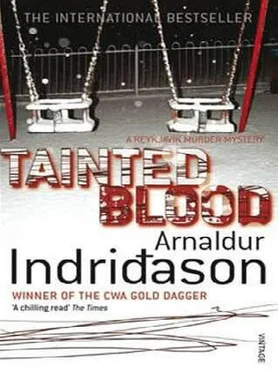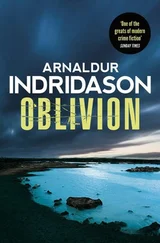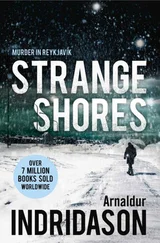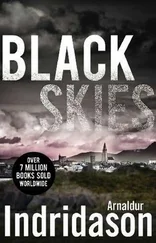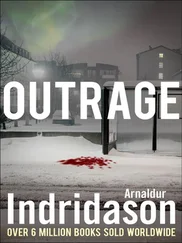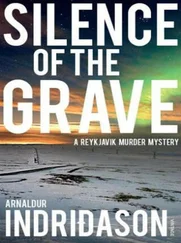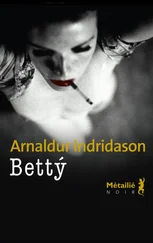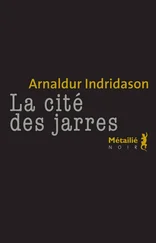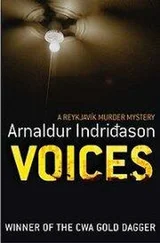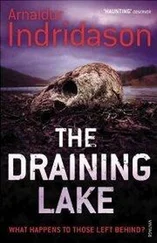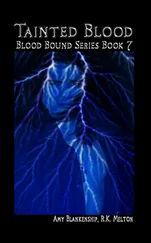Arnaldur Indridason - Tainted Blood
Здесь есть возможность читать онлайн «Arnaldur Indridason - Tainted Blood» весь текст электронной книги совершенно бесплатно (целиком полную версию без сокращений). В некоторых случаях можно слушать аудио, скачать через торрент в формате fb2 и присутствует краткое содержание. Год выпуска: 0101, ISBN: 0101, Издательство: Random House Publishing Group, Жанр: Полицейский детектив, на английском языке. Описание произведения, (предисловие) а так же отзывы посетителей доступны на портале библиотеки ЛибКат.
- Название:Tainted Blood
- Автор:
- Издательство:Random House Publishing Group
- Жанр:
- Год:0101
- ISBN:9781409078401
- Рейтинг книги:4 / 5. Голосов: 1
-
Избранное:Добавить в избранное
- Отзывы:
-
Ваша оценка:
- 80
- 1
- 2
- 3
- 4
- 5
Tainted Blood: краткое содержание, описание и аннотация
Предлагаем к чтению аннотацию, описание, краткое содержание или предисловие (зависит от того, что написал сам автор книги «Tainted Blood»). Если вы не нашли необходимую информацию о книге — напишите в комментариях, мы постараемся отыскать её.
Tainted Blood — читать онлайн бесплатно полную книгу (весь текст) целиком
Ниже представлен текст книги, разбитый по страницам. Система сохранения места последней прочитанной страницы, позволяет с удобством читать онлайн бесплатно книгу «Tainted Blood», без необходимости каждый раз заново искать на чём Вы остановились. Поставьте закладку, и сможете в любой момент перейти на страницу, на которой закончили чтение.
Интервал:
Закладка:
He opened the drawers on the right-hand side. The top two were empty. In the third he found a pack of cards, a folding chess set, an old inkwell.
He found the photograph underneath the bottom drawer.
Erlendur was closing the bottom drawer again when he heard what sounded like a slight rustling from inside it. When he opened and closed it again he heard the same rustling. It rubbed against something on its way in. He sighed and squatted down, looked inside but could see nothing. He pulled it back out but heard nothing, then closed it and the noise came again. He knelt on the floor, pulled the drawer right out, saw something stuck and stretched out to get it.
It was a small black-and-white photograph, showing a grave in a cemetery in wintertime. He didn't recognise the cemetery. There was a headstone on the grave and most of the inscription on it was fairly clear. A woman's name was carved there. AUDUR. No second name. Erlendur couldn't see the dates very clearly. He fumbled in his jacket pocket for his glasses, put them on and held the photograph up to his nose. 1964–1968. He could vaguely make out an epitaph, but the letters were small and he could not read it. Carefully he blew the dust off the photo.
The girl was only four when she died.
Erlendur looked up as the autumn rain thrashed against the windows. It was the middle of the day but the sky was a gloomy black.
6
The big lorry rocked in the storm like a prehistoric beast and the rain pounded against it. It had taken the police some time to locate as it wasn't parked where Holberg lived in Nordurmyri, but in a car park west of Snorrabraut, by the Domus Medica health centre, several minutes' walk from Holberg's home. In the end they had made a radio announcement asking for information about the lorry's whereabouts. A police patrol had found it at about the same time that Erlendur and Sigurdur Oli left Holberg's flat with the photograph. A forensic team was called out to comb the vehicle for clues. It was an MAN model with a red cab. All that a quick search revealed was a collection of hardcore pornographic magazines. It was decided to move the lorry to CID headquarters for further investigation.
While this was going on, forensics got to work on the photograph. It transpired that it was printed on Ilford photographic paper, which was used a lot in the 1960s but had long since been discontinued. Probably the photograph had been developed by the photographer himself or by an amateur; it had begun to fade as if the job had not been done very carefully. There was nothing written on the back and there were no landmarks by which to determine the cemetery in which it had been taken. It could be anywhere in the country.
The photographer had stood about three metres from the headstone. The shot was taken more or less directly in front of it; the photographer must have had to bend his knees unless he was very short. Even from that distance the angle was quite narrow. There was nothing growing near the grave. A powdery snow lay on the ground. No other grave could be seen. Behind the headstone, all that was visible was a white haze.
Forensics concentrated on the epitaph which was largely indistinguishable because the photographer had stood so far away. Numerous reproductions were made of the photograph and the epitaph was enlarged until every single letter had been printed out on A 5paper, numbered and arranged in the same sequence as on the headstone. They were coarse-grained pictures, hardly more than alternating black-and-white dots that created nuances of light and shade, but once scanned into a computer the shadowing and resolution could be processed. Some letters were clearer than others, which left the forensic team to fill in the gaps. The letters M, F and O were clearly discernible. Others were more difficult.
Erlendur phoned the home of a department manager from the National Statistics Office who agreed, cursing and swearing, to meet him at the offices on Skuggasund. Erlendur knew all the death certificates issued since 1916 were housed there. No-one was in the building, all the staff having left work some time before. The department manager pulled up in his car outside the Statistics Office half an hour later and shook Erlendur's hand curtly. He entered a PIN in the security system and let them into the building with a card. Erlendur outlined the matter to him, telling him only the bare essentials.
They looked at all death certificates issued in 1968 and found two in the name of Audur. One was in her fourth year. She had died in the February. A doctor had signed the death certificate and they soon found his name in the national registry. He lived in Reykjavik. The girl's mother was named on the certificate. They found her without any problems. Her name was Kolbrun. She had last been domiciled in Keflavik in the early 1970s. They then checked again among the death certificates. Kolbrun had died in 1971, three years after her daughter.
The girl had died from a malignant tumour on the brain.
The mother had committed suicide.
7
The bridegroom welcomed Erlendur into his office. He was a quality and marketing manager for a wholesaling company that imported breakfast cereal from America and Erlendur, who had never tasted American breakfast cereal in his life, pondered as he sat down in the office what a quality and marketing manager at a wholesaling company actually did. He couldn't be bothered to ask. The bridegroom was wearing a well-ironed white shirt and thick braces and he had rolled up his sleeves as if managing quality issues required every ounce of his strength. Average height, a little chubby and with a ring of beard around his thick-lipped mouth. Viggo was his name.
"I haven't heard from Disa," Viggo said quickly and sat down facing Erlendur.
"Was it something you said to her that. ."
"That's what everyone thinks," Viggo said. "Everyone assumes it's my fault. That's the worst thing. The worst part of the whole business. I can't stand it."
"Did you notice anything unusual about her before she ran away? Anything that might have upset her?"
"Everyone was just having fun. You know, a wedding, you know what I mean."
"No."
"Surely you've been to a wedding?"
"Once. A long time ago."
"It was time for the first dance. The speeches were over and Disa's girlfriends had organised some entertainment, the accordionist had arrived and we were supposed to dance. I was sitting at our table and everyone started looking for Disa, but she was gone."
"Where did you last see her?"
"She was sitting with me and said she needed to go to the toilet."
"And did you say anything that could have made her sulk?"
"Not at all! I gave her a kiss and told her to be quick."
"How much time passed from when she left until you started looking for her?"
"I don't know. I sat down with my friends and then went outside for a smoke — all the smokers had to go outside — I talked to some people there and on the way out and back, sat down again and the accordionist came over and talked to me about the dance and music. I talked to some other people, I guess it must have been half an hour, I don't know."
"And you never saw her during that time?"
"No. When we realised she was gone it was a total disaster. Everyone stared at me as though it was my fault."
"What do you think has happened to her?"
"I've looked everywhere. Spoken to all her friends and relatives but no-one knows a thing, or that's what they say anyway."
"Do you think someone's lying?"
"Well, she must be somewhere."
"Did you know she left a message?"
"No. What message? What do you mean?"
"She hung a card on the message tree thing. 'He's a monster, what have I done?' it said. Do you know what she means by that?"
Читать дальшеИнтервал:
Закладка:
Похожие книги на «Tainted Blood»
Представляем Вашему вниманию похожие книги на «Tainted Blood» списком для выбора. Мы отобрали схожую по названию и смыслу литературу в надежде предоставить читателям больше вариантов отыскать новые, интересные, ещё непрочитанные произведения.
Обсуждение, отзывы о книге «Tainted Blood» и просто собственные мнения читателей. Оставьте ваши комментарии, напишите, что Вы думаете о произведении, его смысле или главных героях. Укажите что конкретно понравилось, а что нет, и почему Вы так считаете.
